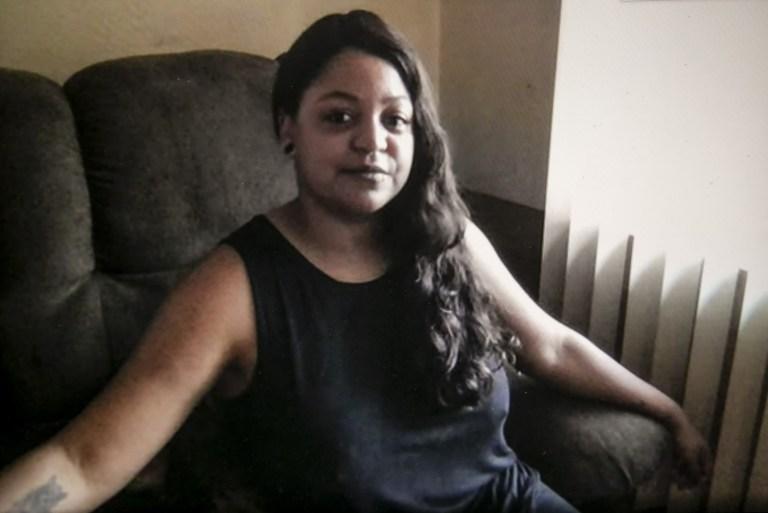Last Sunday, a freak lightning storm hit the Salinas Valley and sparked a fire in the hills above America’s salad bowl. On Monday, local students started week two of classes moved online to slow the rapid spread of the coronavirus. By Wednesday, widening fire evacuations forced a breaking point: Even online classes were cancelled at some schools.
“It’s been rough,” said Kati Bassler, president of the Salinas Valley Federation of Teachers. “We have a second-year teacher that lost her home.”
The turbulent end to summer break follows months of confusion and controversy over if and how to reopen California schools. In July, the state ordered schools in counties home to 97% of students and hundreds of thousands of teachers to begin the year online. But in recent weeks, some schools have challenged the rules by rebranding themselves as daycares or applying for waivers. The situation is also changing quickly in places recently removed from a state virus watch list, including Orange, San Diego, Mono, Sierra and Santa Cruz counties.
Behind the scenes, difficult questions about what’s safe and what’s sensible have come down to hundreds of district-by-district negotiations. The most contentious pit teachers’ unions against skeptical administrators, critics of union self-interest and proponents of private or charter schools. Caught in between are non-union teachers with less negotiating power, plus parent groups forming to alternately hire teachers for private learning pods, fundraise for needy classrooms or mull conspiracy theories about vaccines. Besides, one popular line of criticism goes, if nurses and police are still required to report to essential jobs, why not teachers?
Teachers’ unions say what’s on the line is both the immediate health of students and teachers, as illustrated by school outbreaks in other places, as well as the long-term viability of the state’s public schools. California Teachers Association President E. Toby Boyd said in an interview that without more funding, the union, a perennial foe of conservative groups, is bracing for much deeper cuts than the 30,000 education layoffs that labor groups reported during the Great Recession.
“We’re thinking about twice those numbers,” Boyd said. The union projects a looming budget shortfall of up to $20 billion, or “a big hole to fill.”
Instead, the union and allies like the California Federation of Teachers and Service Employees International Union are hoping to build on many successful distance learning negotiations to lobby for new taxes. Boyd said his union is advocating for a special legislative session to consider new proposed wealth taxes AB 1253 and AB 2088, which are opposed by Republicans and many moderate Democrats. Also on the table, he said, are more teacher strikes like the ones that swept Los Angeles and Oakland last year.
“Society has realized the importance of education and what teachers really do,” Boyd said. “We will see if that’s the truth. There’s a phrase: put your money where your mouth is.”
Sink or Swim
During a normal back-to-school season, San Pedro High School English teacher Maya Suzuki Daniels and many of her fellow Los Angeles teachers would be following a familiar routine: Get your class schedule, spend a few hundred of your own dollars on supplies and, for growing numbers who have moved hours away in search of affordable housing, brace for the long commute.
But this year is anything but routine, and Suzuki Daniels, 30, is turning to her mother-in-law for help juggling online classes with caring for her 1-year-old son.
“There’s always this feeling that you’re doing something wrong,” Suzuki Daniels said, after a breakneck shift to distance learning in March. “It really became kind of a sink or swim. Either you’re going to have to take a new kind of responsibility or we’re going to sink, this whole system of public education.”
California’s 319,000 public school teachers are at the center of debate about reopening the state’s economy during the pandemic, but opposition to in-person classes is part of a much bigger reckoning for the profession. Salaries in many regions haven’t kept up with record home prices, pushing teachers out of the communities where they work. Now, with distance learning, they also face new versions of old challenges, like tracking down absent students or making sure their own kids are keeping up in Zoom classes.
How much California teachers get paid for that work varies widely. In rural Siskiyou County, teachers averaged $40,000 a year during the 2018-2019 school year, according to a Sacramento Bee analysis. That’s a fraction of the $136,478 teacher average in affluent districts like the one in Google’s hometown of Mountain View.
Since the painful cuts of the recession a decade ago, a new generation of activist teachers have come together to push for priorities like more funding, smaller classes and less punitive systems. Last year, the first teacher strike in three decades at the nation’s second-largest public school district, Los Angeles Unified, ended with pay raises and the Legislature taking up major school reform questions. Even before the coronavirus, this school year was set to coincide with a high-profile campaign for Prop. 15, a commercial property tax hike that would raise up to $11 billion per year for education and local governments.
During the pandemic, teachers and their unions have had more success than essential workers in private industry — agriculture, warehouses, grocery stores — in negotiating the terms of reopening. While most sides now agree that the overlapping crises of the virus, record wildfires and statewide racial justice protests look a lot like a tipping point for education and organized labor, the question is what kind: A chance to rebuild diminished public institutions, or a catalyst for more privatization?
“It’s really hard to sort out history as it’s happening,” said Fred Glass, who wrote a history of California organized labor and worked for 28 years at the California Federation of Teachers. “We’ve never seen anything like this.”
The Art of the Zoom Deal
Teachers and union reps may be working remotely, but that doesn’t mean they can’t still drive a hard bargain. In socially distant or online negotiations across the state this summer, they hashed out benchmarks to go back to in-person classes, potential hybrid schedules, protocols for protective equipment and contentious live video requirements.
When school started on Aug. 10 in the Salinas Valley, teachers were adapting to their new game plan. Bassler’s local union had spent months crafting elaborate scenarios for hybrid on- and offline classes. After the state order to keep all students home, about half of local teachers were coming into empty classrooms to record lesson videos. HVAC systems had been upgraded to increase ventilation, but that, too, soon backfired.
“Our buildings now have a significant amount of smoke in them,” Bassler said. Teachers have been resilient as fires continue to burn, but even the silver lining is dark: “With distance learning, in a way, it’s a blessing that they can probably continue working if they have shelter.”
The fine points of reopening negotiations were generally left up to local union chapters. At the Greater Santa Cruz Federation of Teachers, union President Casey Carlson and her team invited school district officials to their union’s parking lot, where they set up chairs and TV trays for outdoor negotiations that paid off in a late-August agreement.
Steven Comstock, president of Bakersfield Elementary Teachers
Association, sits in his office on the first day of school.
Comstock, who was enthusiastic for the beginning of the school
year, said that Zoom had already crashed once that morning but
was running again quickly. (Photo by Anne Wernikoff for
CalMatters via Google Hangout)

“Face to face you can kind of read each other, and you take your breaks. There’s a strategy on that,” Comstock said. “Online all you can do is mute or go into a breakout room or something.”
For Comstock, the summer was above all a lesson in the inequality that has always plagued the urban district with more than 30,700 students — 90% eligible for free lunch programs, 91% non-white — and 1,700 teachers. While parents in more affluent surrounding suburbs pushed to go back to school, Comstock’s district heard from parents who worked high-exposure essential jobs and didn’t want to risk their childrens’ safety. The district rushed to raise money for laptops and WiFi hotspots for each student, rather than issuing one device per family like in the spring.
“This has really shown who has and who doesn’t have,” Comstock said.
There’s also the question of what the breakneck shift to distance learning could mean longer term for school funding, hopefully avoiding cuts at schools already struggling to attract new teachers. Comstock has his eye on Capitol Hill to see whether a deal emerges on federal stimulus measures, since billions of dollars in state education funding depend on federal programs.
“The whole thing,” Comstock said, “it’s just a political football going back and forth.”
Fight Like Hell
Many of California’s 1,037 public school districts went through a similar series of negotiations in the months leading up to the first day of school, said Jeff Freitas, president of the California Federation of Teachers.
Unions were involved because the pandemic changed the working conditions that teachers agree to in collective contracts with school districts. Many questions had to be answered: Could days lost to the pandemic be counted like snow days? Or once it was clear that the disruption was longer term, would teachers’ hours or pay change? What happens if a teacher gets sick?
“We’re getting smeared, you know, as being liberal and brainwashing the kids and a bunch of Communists, but I really see it like look, do you want a country or not?”
SUZUKI DANIELS, LOS ANGELES ENGLISH TEACHER
Many districts came to the negotiating table willingly, but the state union at times had to help “force open that door” to start the process, Freitas said, through tactics like unfair labor practice complaints or enlisting local school boards to help wrangle reluctant superintendents. The reasons for negotiation delays varied, he said, from personal or political differences between districts and the union to broader shifts in a community that have diminished teachers’ negotiating power.
In most cases, unions signed a “side letter,” a contract addendum generally referred to as a memorandum of understanding. Among the common sticking points were funding commitments, how many hours of live instruction per day to require and how worker’s compensation or legal liability will work for teachers who contract coronavirus when in-person classes resume.
In Los Angeles, Suzuki Daniels senses that the tense moment for her profession is part of something bigger. She sees teaching as “kind of revolutionary,” and advocates not just for public schools but also other civic institutions undermined by privatization and conservative politics, like voting rights and the post office.
“The most visible public sector is teachers saying, ‘Well hang on, we’re going to fight like hell,’” she said. “We’re getting smeared, you know, as being liberal and brainwashing the kids and a bunch of Communists, but I really see it like look, do you want a country or not?”
How public schools have handled shutdowns is also a lightning rod in parent Facebook groups that have formed during the pandemic, like the 2,200-member public “Reopen California Schools” group.
Posters compare notes on switching to private or charter schools seeking loopholes to go back to class sooner, and they often blame dysfunction on teachers’ unions. In some cases, the conversation verges into conspiracy theories about forced vaccines, or whether Zoom classes are part of a Chinese government plot to indoctrinate children. Others mostly worry about students falling behind.
Results at the state level are coming into focus. Teachers’ unions concentrated over the summer on state budget negotiations and SB 98. The wide-ranging education bill tacked onto the budget allocated hundreds of billions of state and federal dollars to help schools weather the pandemic, but unions fear it won’t all materialize, leaving a multibillion-dollar budget hole. The measure also increased recordkeeping requirements for online classes and reduced teaching hours required, though Freitas said the terms were confusing and sometimes onerous for teachers after concerns about poor student outcomes in the spring.
“We lost instruction during the closure. That was crisis education,” Freitas said. “(Policymakers) didn’t want that to happen again and they wanted accountability, but they wanted accountability without really talking to the experts that are in the classroom.”
Though the process hasn’t always been smooth, it could have lasting impacts on the role teachers play in drafting curriculums. Many are already advocating to move away from drill-and-test routines toward a more holistic approach to mental health and life outside the classroom.
Slipping Through the Cracks
Piano teacher Krystina Ludovico started a Facebook group over the
summer to help connect teachers with supplies they need for the
new school year. (Photo by Anne Wernikoff for CalMatters via
GoogleHangout)

Her fears were correct, and soon the group had attracted nearly 400 members posting a stream of fundraisers for pencil cases, crayons, and bigger ticket items.
“A lot of the teachers are like, ‘I need laptops and printers,’” Ludovico said. “It was like, ‘Oh my god, I was not prepared for this.’”
East Bay Teacher Needs is one example of a growing number of grassroots efforts to help keep teachers and students from slipping through the cracks during distance learning. It’s a model that echoes other informal patches to the social safety net stretched thin during the pandemic, like GoFundMe campaigns to stave off evictions or Venmo accounts to collect mutual aid dollars to feed hungry neighbors.
Boyd is hoping to find more permanent solutions, starting with the new taxes up for consideration in the Legislature and the November election.
“This is a political world that we live in,” Boyd said, “and we have to deal with it as such.”
CalMatters.org is a nonprofit, nonpartisan media venture explaining California policies and politics.
–
Stay up to date on the effects of the coronavirus on people and business in the Capital Region: Subscribe to the Comstock’s newsletter today.
Recommended For You

A Year We Won’t Soon Forget
To open our Big Fix issue, Comstock’s executive editor reflects on the first half of a year in crisis.

Coronavirus Replay
After canceling spring sports, the NCAA extends eligibility to student athletes to play for another season
The NCAA voted on March 30 to allow schools to provide spring-sport student athletes with an additional season.

Learning to Pivot
New college grads are adapting to an economy and job market hard hit by the coronavirus pandemic
As college seniors finished their classes online, the impact of the coronavirus pandemic complicated their job prospects.

From Internet Rights to Streeteries, How the Pandemic Is Changing Working From Home
The coronavirus has reshaped how Californians live, learn and work in uneven ways. Here’s five takeaways on the future of working from home.



